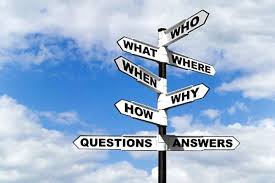
Have you ever sent a business communication (typically an email or text) and asked more than one question? What happened? Did you get an answer to all the questions you raised? I’d guess probably not.
In today’s attention deficit society, people gloss over electronic messaging. They are thinking about the next task, not paying attention, wondering what’s for lunch. So they don’t focus on what you wrote.
If, for example, you wanted to know when next week’s IT meeting was scheduled AND where, you’d likely only get an answer to one of those questions, particularly if you didn’t specifically identify both AND keep your message short.
I’m not sure what the solution is to this, but I suggest you keep your emails and text messages concise and direct. Don’t write three lengthy paragraphs, then expect the responder to send you back exactly the information you need. That person is lost after one long paragraph and two will just send him into deep space.
Here’s the way to do it: “Jody: Good to see you this morning. 1) What day and time is next week’s IT meeting? 2) What room will it be in? Thanks, and looking forward to catching up with you.”
That message stands a chance of getting all the information you want. If not, then you just need to ask one question per transmission, walk over to Jody’s office and talk to him face-to-face, or pick up the phone and call. You’ll get answers then, but make sure to confirm whether it’s east coast, central, mountain or Pacific time. That’s a whole ‘nother ball game.
In today’s attention deficit society, people gloss over electronic messaging. They are thinking about the next task, not paying attention, wondering what’s for lunch. So they don’t focus on what you wrote.
If, for example, you wanted to know when next week’s IT meeting was scheduled AND where, you’d likely only get an answer to one of those questions, particularly if you didn’t specifically identify both AND keep your message short.
I’m not sure what the solution is to this, but I suggest you keep your emails and text messages concise and direct. Don’t write three lengthy paragraphs, then expect the responder to send you back exactly the information you need. That person is lost after one long paragraph and two will just send him into deep space.
Here’s the way to do it: “Jody: Good to see you this morning. 1) What day and time is next week’s IT meeting? 2) What room will it be in? Thanks, and looking forward to catching up with you.”
That message stands a chance of getting all the information you want. If not, then you just need to ask one question per transmission, walk over to Jody’s office and talk to him face-to-face, or pick up the phone and call. You’ll get answers then, but make sure to confirm whether it’s east coast, central, mountain or Pacific time. That’s a whole ‘nother ball game.